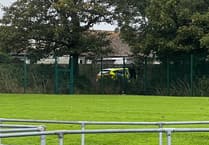Just over half of eligible voters in the island voted in this year’s general election.
Voter turnout was 50.68% or 32,812 of 64,744 eligible people.
This was lower than in 2016.
Tony Brown, the former Chief Minister, wasn’t surprised at the turnout.
He said: ’You’re never really sure. You don’t know if there was any knock on effect of people going out to vote because of Covid.
’My view is that the interest in an election is created by the candidates and you tend to find where the candidates are very active and there seems to be a clear fight that the voting pattern there is high.
’For example, Peel was high because there were so many candidates and it was quite a battle.’
He said the island’s figures were ’on a reasonable par’ with elsewhere.
Mr Brown said: ’Across the world, most elections are in the 60% turnout range - America’s one of the worst, except for last time, but it’s usually quite low.
’The Isle of Man reflects most other nations in terms of turnout, so it doesn’t surprise me.’
In 2019, the UK’s turnout was 67.3%. Here the turnout was 53% in 2016 and 59% in 2001.
Mr Brown said: ’What I think matters more is the figures per constituency because that tells you how active the candidates have been in that area and how contested it is.
’Also, if there’s a topic, for example, Garff where there was flooding, I think you’ll find that the turnout there was quite high because they had a very keen topic to fight over.’
He added: ’The highest turnout in recent times was when the island used a single transferable vote, so that was 1986 and 1991. During those two election periods the turnout was higher, contrary to what the politicians thought at the time.’
The constituency this year with the largest turnout in percentage was Rushen (5,884 eligible voters) with 58.68% and the lowest in Douglas East (4,891 eligible voters) with 32.23%.
’Douglas East is always relatively low. The community there has a lot of people in and out, lots of visitors and short-term stays so people don’t bother voting. That’s not a surprise, that’s always been the case,’ the Mr Brown said.
Meanwhile, for 16- and 17-year-olds, there were 950 eligible voters and of those 436 voted - that’s 46%.
Mr Brown said: ’That isn’t bad, I would’ve thought that’s pretty good really. Most 16- and 17-year-olds aren’t that bothered.
’Who comes out to vote depends how effective and how focused the candidates are.’
He added: ’It’s a really mixed bag, it’s very difficult to tie any of this down.
’We don’t have parties so it’s not as clear cut as the UK for example or across most of Europe because it’s about individuals. It really depends how hard fought it is by the individuals.’
Speaking specifically on his former constituency, he said: ’I think with Castletown being part of a bigger constituency that’s reduced the numbers. People can’t just focus now on Castletown and I suspect that has reduced the turnout. Certainly it’s impacted on the town of Castletown because they’re part of a larger area, so direct focus has been removed.’

.png?width=209&height=140&crop=209:145,smart&quality=75)



Comments
This article has no comments yet. Be the first to leave a comment.